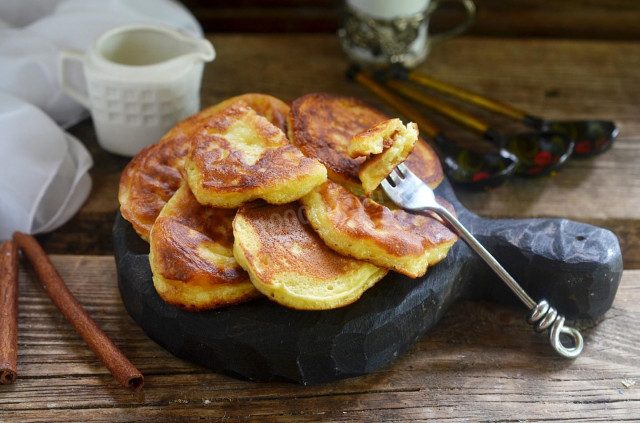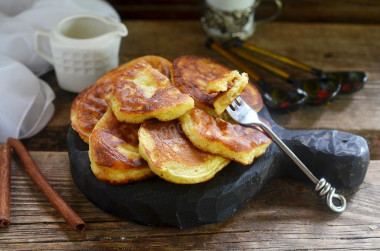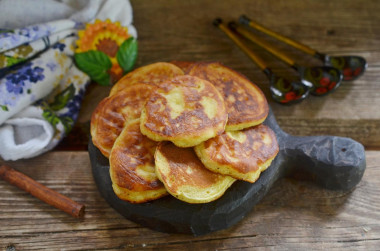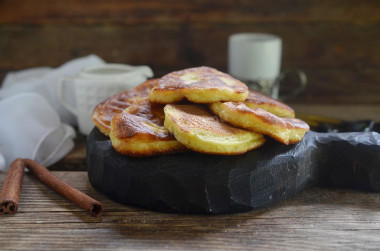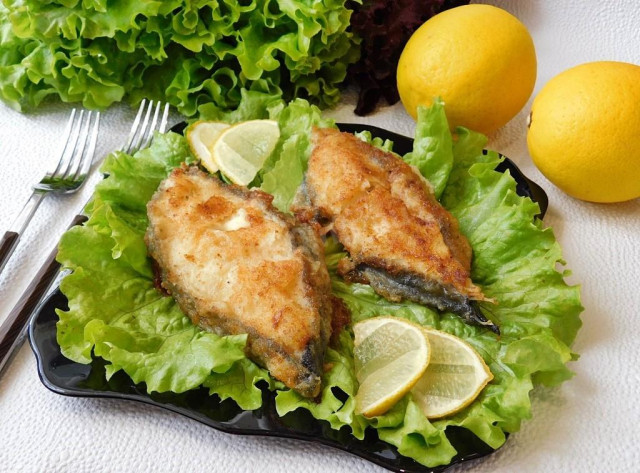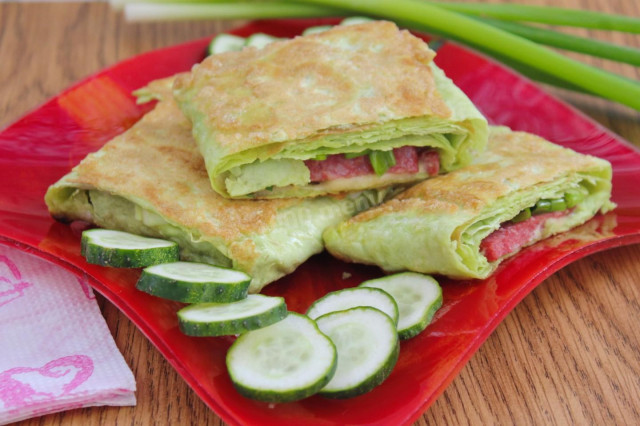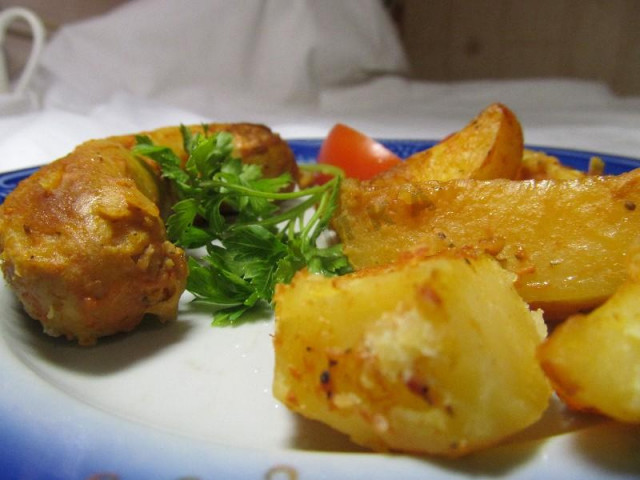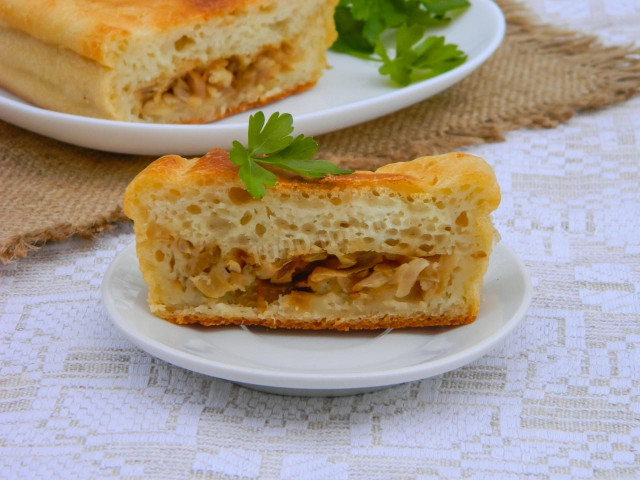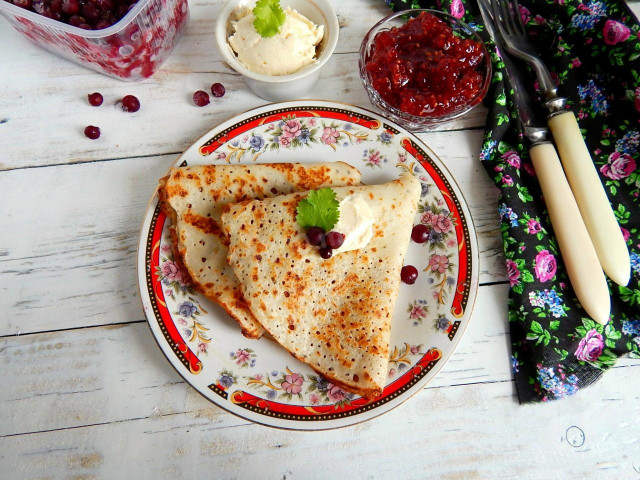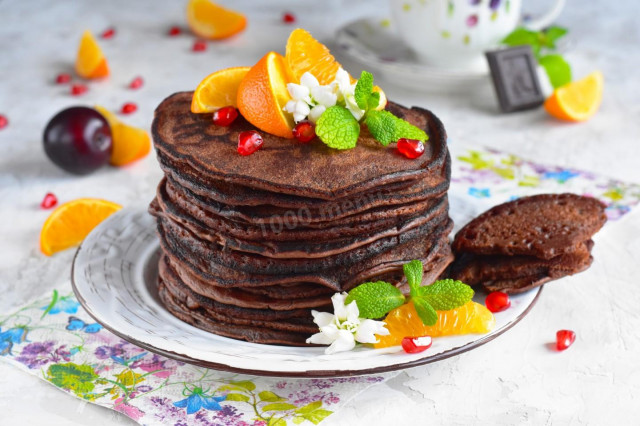Composition / ingredients
Step-by-step cooking
Step 1:
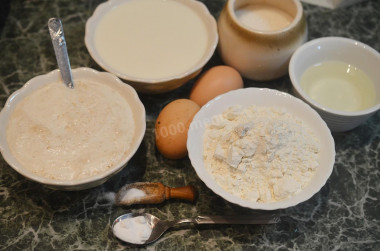
How to bake pancakes with sourdough? Prepare all the necessary products. Any starter culture is suitable: rye, wheat, whole grain, but at the peak of activity. Milk at room temperature, any degree of fat content. Wheat flour. I must say right away that live, unbleached flour is needed for baking with sourdough. Therefore, when you choose flour in the store, make sure that it is not snow-white, but cream-colored. On bleached flour, sourdough pastries will not rise!
Step 2:
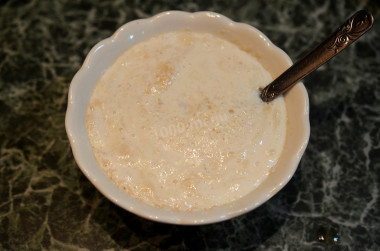
Remove the starter culture from the refrigerator for 2 hours and feed it with flour. Wait for the peak of activity, the starter should bubble up.
Step 3:
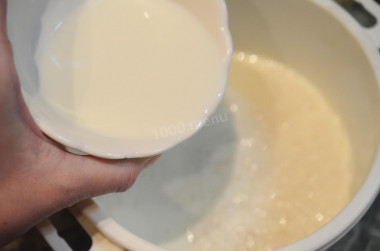
Pour milk into the starter.
Step 4:
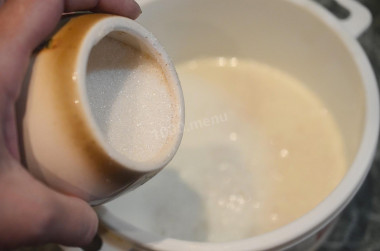
Add sugar.
Step 5:
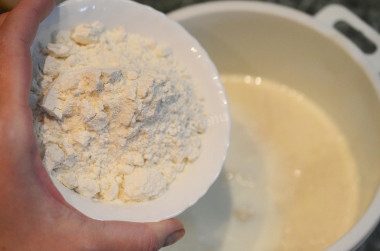
Add flour. In baking, I always recommend sifting flour. During this process, the flour is saturated with oxygen and the finished pastry turns out to be more airy.
Step 6:
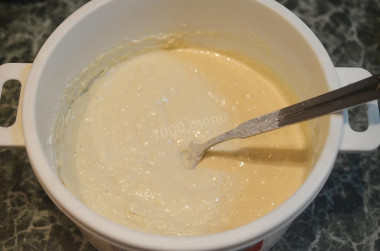
Mix so that there are no lumps, cover the dough and leave overnight. You can leave it for any time from 8 to 12 hours.
Step 7:
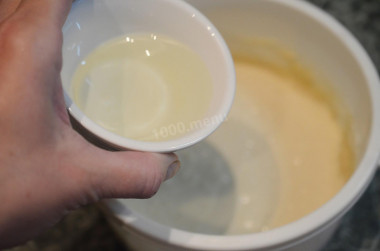
After the specified time, pour 5 tablespoons of oil into the dough. It can be any vegetable oil, it can be melted butter - choose according to your taste.
Step 8:
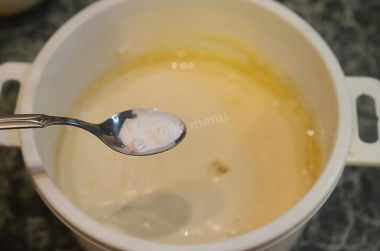
Add salt and soda.
Step 9:
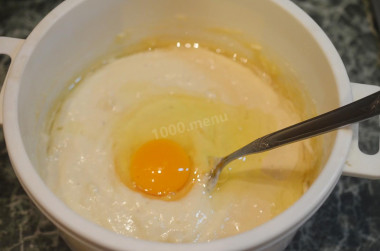
Beat the eggs one at a time, mixing the dough well each time.
Step 10:
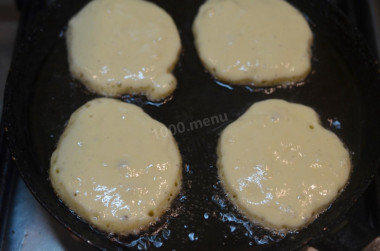
Heat the vegetable oil in a frying pan. It can be any vegetable, but since we will be heat-treating the oil, it must necessarily be refined. You can also fry pancakes in melted butter. The more oil there is in the pan, the crispier the pancakes will be. You can also simply brush the frying pan with a minimum amount of oil. Pour in a little dough with a spoon, fry over low heat for 5-7 minutes.
Step 11:
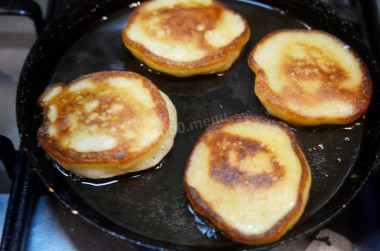
Then turn the pancakes over and fry for about the same amount of time on the other side. Choose the right frying pan for frying pancakes - a cast-iron frying pan or just a frying pan with a non-stick coating is ideal.
Step 12:
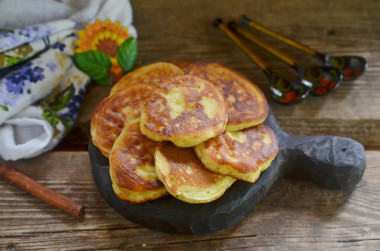
Serve pancakes with honey, sour cream or jam. Bon appetit!
Be prepared for the fact that you may need more or less flour than indicated in the recipe. Focus not on the amount of flour, but on the desired consistency of the dough. To avoid mistakes, read about flour and its properties!
Use oil with a high smoking temperature for frying! Any oils are useful only until a certain temperature is reached - the point of smoking, at which the oil begins to burn and toxic substances, including carcinogens, are formed in it.
Unrefined oils, with rare exceptions, have a low smoking point. There are a lot of unfiltered organic particles in them, which quickly begin to burn.
Refined oils are more resistant to heating, and their smoking point is higher. If you are going to cook food in the oven, on a frying pan or grill, make sure that you use oil with a high smoking point. The most common of the oils with a high smoking point: refined varieties of sunflower, olive and grape.
Caloric content of the products possible in the composition of the dish
- Whole cow's milk - 68 kcal/100g
- Milk 3.5% fat content - 64 kcal/100g
- Milk 3.2% fat content - 60 kcal/100g
- Milk 1.5% fat content - 47 kcal/100g
- Concentrated milk 7.5% fat content - 140 kcal/100g
- Milk 2.5% fat content - 54 kcal/100g
- Chicken egg - 157 kcal/100g
- Egg white - 45 kcal/100g
- Egg powder - 542 kcal/100g
- Egg yolk - 352 kcal/100g
- Ostrich egg - 118 kcal/100g
- Whole durum wheat flour fortified - 333 kcal/100g
- Whole durum wheat flour, universal - 364 kcal/100g
- Flour krupchatka - 348 kcal/100g
- Flour - 325 kcal/100g
- Granulated sugar - 398 kcal/100g
- Sugar - 398 kcal/100g
- Vegetable oil - 873 kcal/100g
- Salt - 0 kcal/100g
- Baking soda - 0 kcal/100g
- Sourdough - 29 kcal/100g

